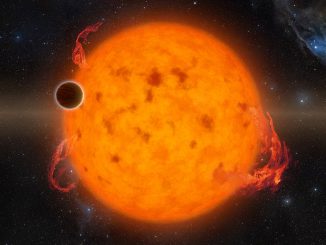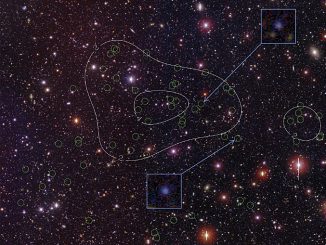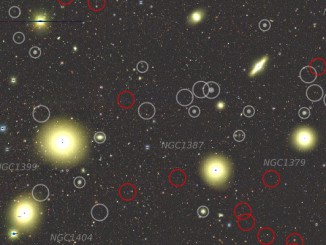
NOAO


Newborn giant exoplanet found orbiting close to its parent star
A team of astronomers has confirmed the existence of a young planet known as K2-33b, only 11 million years old, that orbits very close to its star (at 0.05 astronomical units), with an orbital period of 5.4 days. Approximately five times the size of the Earth, the new planet is a “super-Neptune” and the youngest such planet known.

A young mammoth cluster of galaxies sighted in the early universe
Astronomers have uncovered evidence for a vast collection of young galaxies 12 billion light years away. The newly discovered “proto-cluster” of galaxies, observed when the universe was only 1.7 billion years old (12 percent of its present age), is one of the most massive structures known at that distance.

Oodles of faint dwarf galaxies shed light on cosmological mystery
Computer simulations of the evolution of matter distribution in the universe predict hundreds of low mass dwarf galaxies for every Milky Way-like galaxy. An international team of astronomers recently announced the discovery of an astonishing number of faint low surface brightness dwarf galaxies in the Fornax Cluster, suggesting that the “missing satellites” are now being found.

Hubble reveals galaxy gas flow and star birth regulated by black-hole jets
Astronomers have uncovered a unique process for how the universe’s largest elliptical galaxies continue making stars long after their peak years of star birth. NASA’s Hubble Space Telescope revealed brilliant knots and chains of hot, blue stars forming along the jets of active black holes found in the centres of giant elliptical galaxies.

Universe expanding more slowly than previously thought?
A University of Arizona-led team of astronomers found that the type of supernovae commonly used to measure distances in the universe fall into distinct populations not recognised before. The findings have implications for our understanding of how fast the universe has been expanding since the Big Bang.
